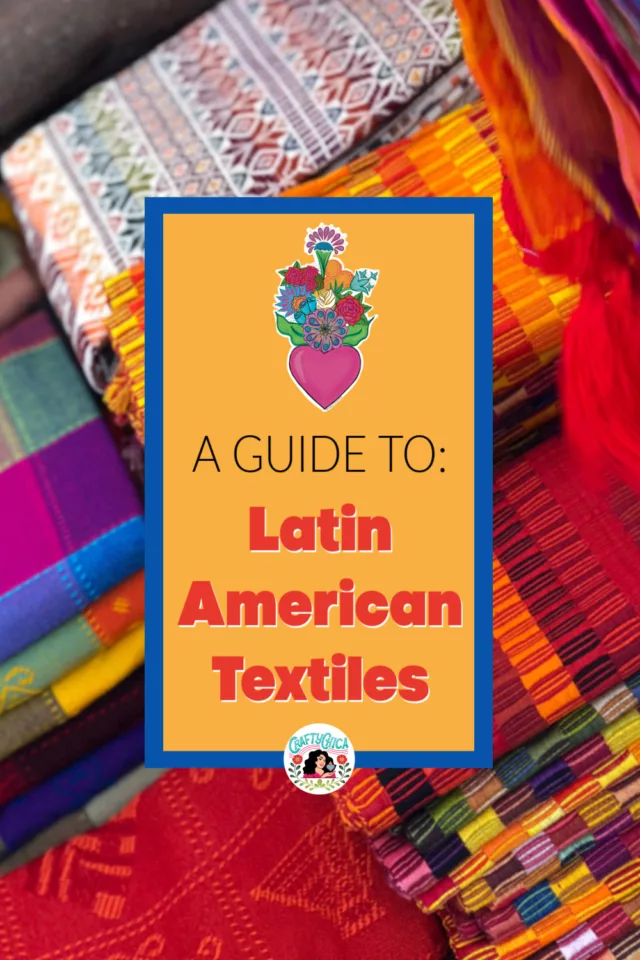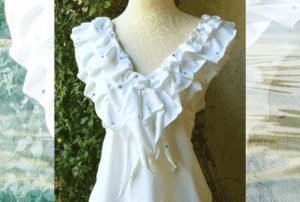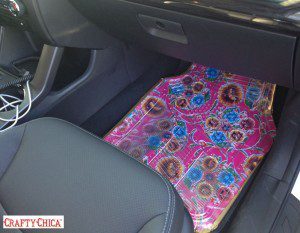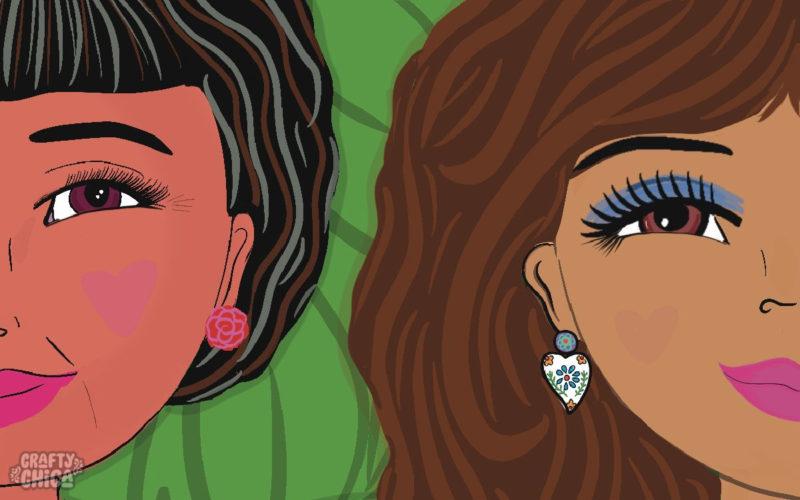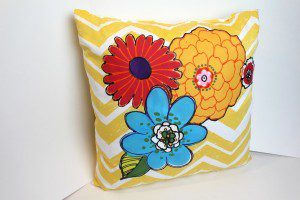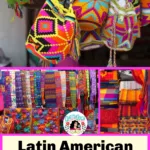It’s one of life’s burning questions – what are the different Latin American textiles?
As a third-gen Mexi-chica living in the United States, I’ve mostly connected to embroidery styles and fabric from Mexico. But recently I went further and researched – because I have a LOT of different Latin American textiles in my fabric stash. I’ve always wanted to learn about them and the regions they came from. It sounds weird, but I felt a sense of guilt not knowing. So I did a bit of discovery and hit the fabric jackpot!
And now I’m sharing it with you!
There are five regions to Latin American countries: Mexico, Central America and Caribbean, Northern South America, Brazil and Southern Cone, in total there are 33 countries. That’s a lot of fiber artistry!
These destinations are abundant with woven textures, colors and designs, created by indigenous peoples who create classic designs still modern today.
From the lush, rainforest corners of the Amazon to the bustling streets of Mexico City, Latin America textiles are a treasure trove of artful expression and cultural values. Many of which tells a story, legacy passed down through generations.
Whether you’re a seasoned crafter looking to infuse your work with new inspirations or simply a lover of all things beautiful and handmade, you’re in for a treat!
So, grab your favorite cup of café or té, and let’s unravel the colorful, intricate world of Latin American textile arts together. Take this as an entry point to explore further. It will add more meaning to the work you create.
A (quick) guide to Latin American textiles
Forgive me if I missed any. Please leave in the comments and I’ll add them!
Argentina

Fileteado: A traditional painting style that has been adapted to textiles, featuring stylized lines, flowers, and vibrant colors. It’s a super fancy, juicy-looking decorative art that originated in Buenos Aires and is often associated with tango culture. It is GORGEOUS! And while it not actually a textile in the traditional sense, this iconic painting style is used on textiles, walls, signs, murals, and more. Check out this Pinterest board by Fileteadogabba – you’ll see what I mean!
How to draw a fileteado flower!

Brazil

Bobbin Lace (Renda de Bilros): A traditional lace-making technique, particularly prominent in the Northeast region. It involves weaving intricate patterns with a collection of bobbins and a pillow, creating delicate and elaborate designs. This is soooo INTENSE. It will make you appreciate lace, for real. Video tutorial
Bolivia
Aguayo: We’ve all seen these! A traditional Andean textile, characterized by its bright colors and geometric patterns. It is used in various ways, including as a carrying cloth, jackets, bags, blankets and for decorative purposes. Here is an article that explains how aguayo cloth is made.
Chile
Mapuche textiles: Woven by the indigenous Mapuche people, these textiles are known for their geometric patterns and symbols, representing the natural world and spiritual beliefs. They often use natural dyes that tie into the stories as well. These are made into blankets, ponchos and bags and so much more. Video story

Arpilleristas Embroidery: Originating from the Arica and Parinacota region, this style of embroidery features bold, vivid colors and patterns inspired by indigenous and colonial influences. It’s a form of applique where shapes are stitched together to form a story. To learn more about Chile’s crafts, check out this article!
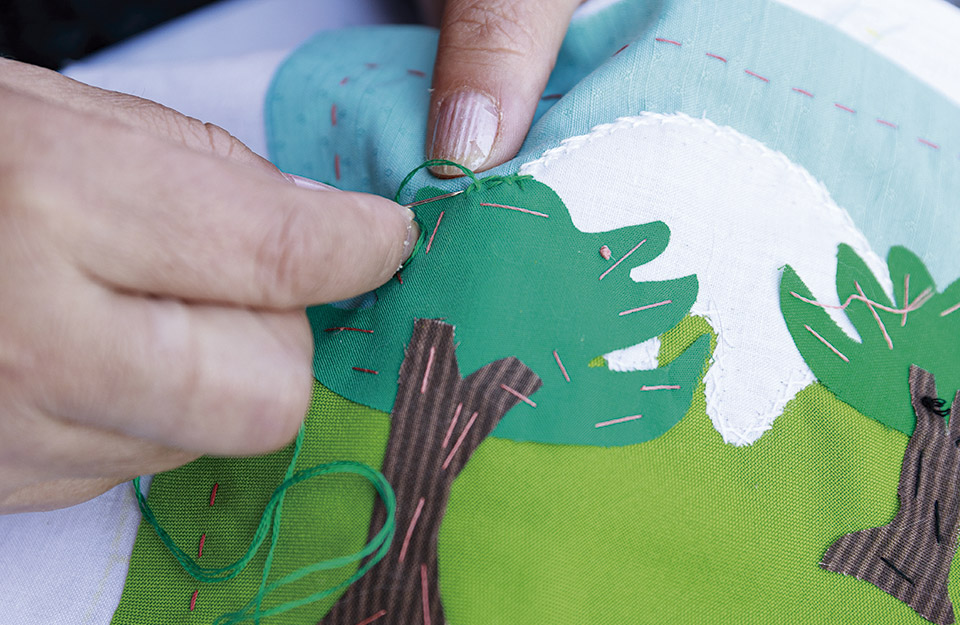
Colombia

Molas: Created by the Kuna people of Colombia and Panama, molas are hand-made using a reverse appliqué technique. They feature complex geometric patterns and vibrant depictions of animals, plants, and mythological figures. Video story

Wayuu Bags: Handwoven by the Wayuu people of Colombia and Venezuela. Known for vivid hues and patterns, each telling a unique story. We’ve all seen and likely even own one. I know I do! They are made from tightly woven crochet in an array of bold colors.

Here is a Wayuu bag video I found of the process to make them. They use a small crochet hook and at least three strands of thread. Not to mention the woven designs. Beyond my skill set, so I appreciate these bags even more!

Ecuador
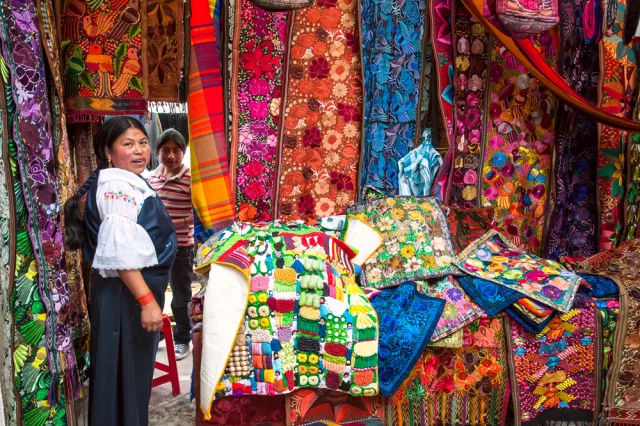
Otavalo textiles: Produced by the indigenous Otavalo people, these textiles are known for their high-quality wool and intricate patterns, reflecting a blend of indigenous and Spanish influences. If you ever visit Otavalo, you’ll see many markets filled with fabric, wood, leather and other handcraft treasures to choose from. The market is the oldest and largest of its kind in South America. The fabric and apparel items are made from Andean resources.
Guatemala

Huipil and Corte: Guatemalan textiles are known for their rich colors and intricate woven patterns, often made on back strap looms. The huipil is a squarish-shaped traditional blouse, exquisitely embroidered and symbolizing the wearer’s village and marital status. link to video

Brocade Weaving: A technique used in Guatemalan textiles, incorporating raised designs into the fabric, often featuring animals, flowers, and geometric shapes.

Mexico

Huipil: (Yes, these are also made in Guatemala!)A traditional garment, often handwoven and embroidered with AMAZING patterns and designs that vary by region, representing the wearer’s cultural background. It’s made of cotton, loose fitting and a bit heavy. It’s often different pieces of embroidered fabric stitched together. Frida wore them a lot! So gorgeous!
Masahua: The Mazahua people are known for their detailed embroidery and weaving, especially in garments like blouses and shawls. Their work often features floral designs and birds, rendered in vibrant colors. You’ve likely seen a muñeca (doll) – these are mostly made from the Masahua textile artists. They incorporate a variety of fabrics and colors to make each one special.
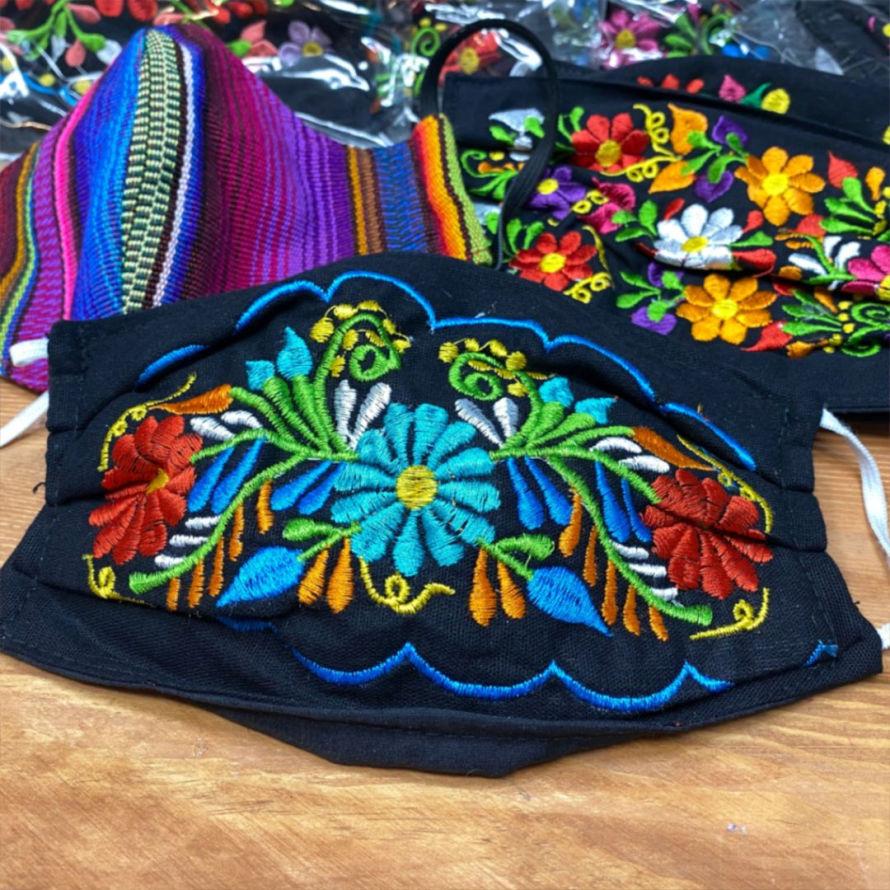
Mexican Embroidery: Features vibrant colors and intricate patterns, often depicting flora and fauna. The most renowned is the embroidery from the Yucatan Peninsula, known as “Xtabentún,” and the Otomí embroidery, which showcases detailed, animal and nature-inspired designs from the Tenango de Doria region in Hidalgo.
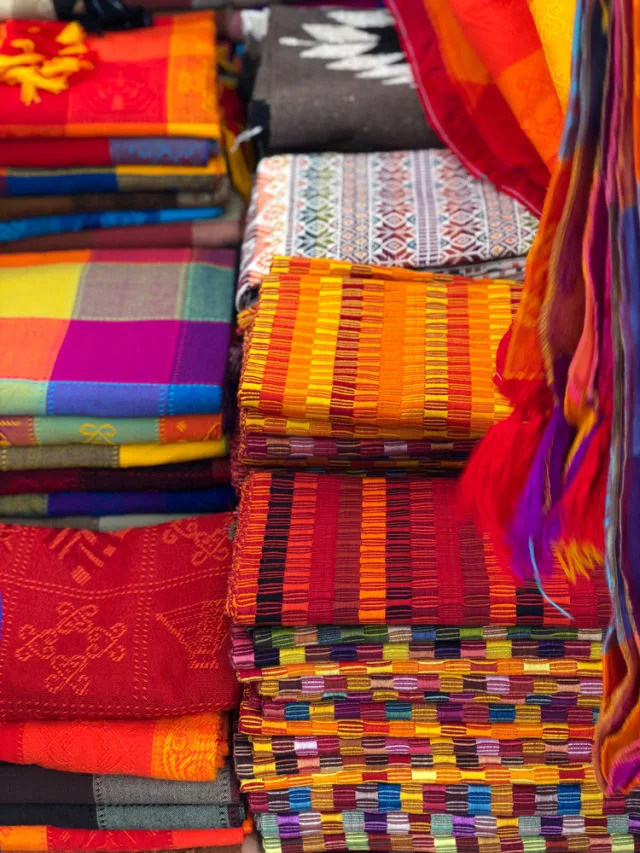
Rebozo: A long shawl or scarf used by Mexican women for centuries. It’s versatile and can be worn in various ways. Head covering, a shawl, a wrap to carry babies (very popular), even as a table cloth. The rebozo has fine fringes (rapacejos) and complex weaving techniques, often featuring ikat patterns. And…Frida, again, loved her rebozos!
Serape: It originates from the Nahuatl word “serapil” – which refers to a garment. The serape’s history is deeply embedded in Mexican culture. Initially worn by the indigenous peoples as a cloak, it evolved into a symbol of Mexican identity. We adore the distinctive stripes and bright color combinations that vary by region. They reflect local traditions and the blending of indigenous and Spanish influences.
Have you ever wondered how serapes are made? Here’s a video!

Peru
Shipibo textiles: Originating from the Shipibo-Conibo people in the Amazon rainforest, these textiles are known for their intricate geometric patterns that are believed to embody the spiritual language of the universe. Link to video

Ayllu Marka embroidery: Traditional embroidery from the Ayacucho region, known for its detailed depictions of rural life, religious themes, and natural landscapes.
These styles represent just a snapshot of Latin America’s rich textile heritage. Each piece tells a story, woven from the threads of history, culture, and community life, offering a window into the diverse identities and traditions of the region.
Project ideas:
Wall hangings
Purses
Clothing
Table settings
Fine art
Quilts
So many options for works of art!
Add your own touch by using metallic threads, assorted trims, and even appliques. Incorporate your own work as well to make it truly unique. Want to know more? Check your local communities and take a textile workshop, you can even find them online. A good place to check are art centers and/or museums. Plus, you’ll learn about indigenous countries!
Keep in mind, this is an overview of styles and threaded art forms, not exactly a deep dive. But I’ll work on that next!
It’s a wrap!
Remember, crafting is not just about creating something beautiful with your hands; it’s about weaving your own story into your creations, connecting with your personal traditions, as well as cultural.
Most importantly, spreading love and positivity through every stitch!
Thanks for checking out my guide to Latin American textiles!

